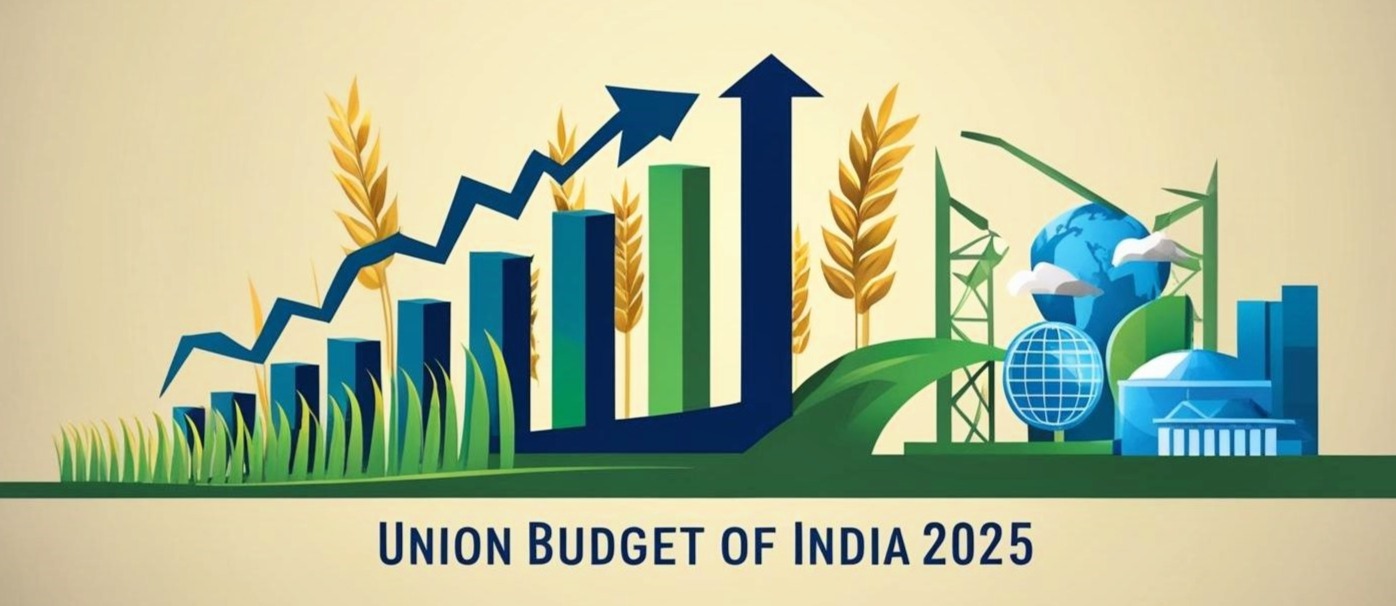Union Budget 2025: Strategic Priorities and Key Expectations for India’s Economic Growth
The Union Budget of India for 2025 will be one of the most crucial since it comes at a time when the country is dealing with post-pandemic recovery, inflationary pressures, global economic uncertainty, and mounting public debt. With India aiming to become a $5 trillion economy by the end of the decade, the budget will most likely prioritize policies and initiatives that promote economic growth, employment, and sustainability while maintaining budgetary health.
Here’s a detailed look at potential expectations and areas of focus for the Union Budget 2025:
- Economic Growth and Fiscal Deficit Management:
Economic Growth estimates: The government is projected to aim for a 6-7% growth rate in FY2025, which is consistent with worldwide estimates for emerging countries. This would be accomplished with strategic investments in infrastructure, digitization, and domestic manufacturing.
Fiscal Deficit: The fiscal deficit aim is going to be a major issue. After reaching over 6.9% of GDP in FY2021 owing to pandemic-related expenses, the goal for FY2025 will be to reduce this amount to around 4.5%. Achieving this without impeding growth will necessitate a delicate balance of greater revenue collection, rationalized subsidies, and prudent spending.
- Taxation and Revenue Generation:
The government may improve income tax laws by simplifying the structure, minimizing tax evasion, and making them more progressive. Tax slabs could be reviewed, particularly in terms of inflation and income growth.
Possible changes include raising the income tax exemption level, changing tax brackets for middle-income earners, and enhancing deductions for long-term savings.
GST Simplification: The Goods and Services Tax (GST) system has received considerable criticism for its complexity. Reforms could be aimed at streamlining GST filing procedures and lowering the compliance burden on MSMEs. Tax rates on specific commodities and services may also be adjusted to make the system more business-friendly.
Taxation of the Digital Economy: As India moves closer to digitalization, there may be new policies aimed at taxing the digital economy, which includes e-commerce platforms, internet enterprises, and technology corporations. This could involve changes to tax treaties or new rules governing cross-border transactions.
- Infrastructure Development:
Significant investment is expected in roads, highways, ports, airports, and trains. The National Infrastructure Pipeline (NIP) is projected to receive significant funding to speed projects that will increase job creation and economic activity.
Urban construction and Smart Cities: As urbanization increases, more financing may be available for the construction of smart cities, public transit systems, and waste management solutions, particularly in Tier 2 and Tier 3 cities.
Green Infrastructure: Investments in renewable energy infrastructure, electric vehicles (EVs), and green buildings may also be noteworthy. India is anticipated to continue focusing on its climate responsibilities under the Paris Agreement, potentially leading to additional assistance for sustainable infrastructure.
- Social Sector: Healthcare, Education, and Welfare:
Healthcare: In the post-pandemic world, healthcare will remain a top focus. The government is projected to dramatically expand funding for the health sector, with an emphasis on healthcare infrastructure, immunization programs, and public health initiatives. There may be a greater emphasis on universal health coverage (like as the Ayushman Bharat programme) and better access to vital drugs.
Education and Skill Development: There will most likely be a focus on improving educational quality at all levels. To alleviate India’s talent gap, the government may launch initiatives to boost digital education, particularly in rural regions, as well as combine vocational training programs. More emphasis on the National Education Policy (NEP) should also be predicted.
Social Welfare: With rising living costs and economic disparities, the budget may increase funding for welfare programs such as MGNREGA (Mahatma Gandhi National Rural Employment Guarantee Act), direct cash transfers, food security programs, and targeted welfare for marginalized communities such as SC/ST and women.
- Agriculture & Rural Development:
Agriculture Reforms: Agriculture is still a critical sector. The administration is anticipated to announce steps to boost farmer incomes, alleviate agrarian suffering, and increase production. This might include increased assistance for agricultural technology, irrigation projects, and crop diversification. There should also be a bigger emphasis on organic farming and sustainable agriculture practices.
Rural infrastructure: Investment in rural infrastructure, including as roads, irrigation, and electrification, is likely to remain a top priority. This will serve to increase production, improve market access, and raise the overall level of living in rural communities.
- Concentrate on technology and innovation:
Digital India: The Digital India project will continue to evolve, with the government likely increasing funding for digital infrastructure, fintech development, and cybersecurity. The budget might help fund the growth of digital businesses, the expansion of 5G networks, and digital literacy initiatives.
AI, Blockchain, and Other Emerging Technologies: The government is expected to invest in the development and implementation of cutting-edge technologies like as artificial intelligence (AI), blockchain, and big data analytics. Incentives for R&D in these sectors may encourage innovation and boost India’s global competitiveness.
- Climate Change & Green Economy:
Sustainability and Green Growth: As environmental awareness grows, the budget may contain initiatives to promote renewable energy sources such as solar, wind, and hydrogen. There may be a push for electric mobility, with further incentives for EV makers and customers.
Carbon Tax and Green Bonds: The government may enact policies such as a carbon tax or green bonds to raise cash for environmental initiatives. This might help India reach its climate goals while boosting green finance.
Conclusion:
Overall, the Union Budget 2025 is projected to find a balance between fiscal discipline and economic growth by making smart investments, reforming taxes, and boosting sectors. The emphasis will most likely be on job creation, rural development, social welfare, and promoting the green economy, while ensuring that critical sectors such as infrastructure, healthcare, and education continue to receive adequate support. In addition, the government intends to assist entrepreneurs, technology adoption, and financial inclusion, all in line with the overarching goal of making India a more competitive, self-sufficient, and environmentally friendly economy.



